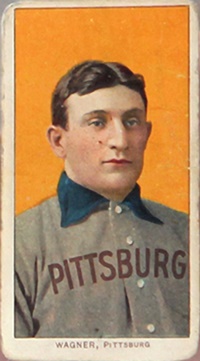I think it is a fairly safe bet to say that most of you have, at one time or another, collected some sports memorabilia. Maybe it was baseball cards, souvenir programs, a signed Derek Jeter ball, or even better, a Joe Montana jersey — hopefully, a game-used one.
When I was growing up in St. Louis, I took part of my allowance money to buy a pack or two of Topps baseball cards and hope that I got some Cardinals players, such as Ken Boyer, Bob Gibson, Stan Musial, Bill White or even Gene Green. In fact, I still have those cards. Lucky me, but I owe it all to my mother who, to this day, claims that she had the foresight to know that the cards would be worth a fortune.
They are not all worth a king’s ransom, but unless you deliberately disposed of some of your keepsakes, or they were destroyed in a fire, you probably have some sports collectibles somewhere in your house or office. And most likely, you have wondered what your items are worth. Certainly you have heard or read that prices of old comic books, Barbie dolls and even McDonald’s toys have skyrocketed and sold for astronomical amounts. A million dollars for an Action Comics #1 from June 1938? If that’s the case, then why shouldn’t your Pie Traynor baseball card from the 1933 Goudey set be worth $100,000?
Actually, it’s a little more complicated than that, and it necessitates taking a look at the sports collectibles market to come up with answers.
 |
| Any Honus Wagner card is valuable. |
The national recession of 2008-09 hit the sports collectibles market hard. Most Americans took a long look at how they were spending their money. To most, collectibles were a luxury and could be put on hold, even to this day. In fact, some collectors have sold part or all of their collection, sometimes at a substantial loss. One collector had a 1952 Topps rookie card (#311) of Mickey Mantle and sold his pristine card for $18,000 when he could easily have gotten three times as much or more. Another collector had an ultra-rare baseball signed by the midget Eddie Gaedel and parted with it for a fraction of the thousand dollars it was worth.
What is the state of the sports collectibles market today, roughly six years after the recession?
There are no simple answers, unfortunately. You need to look at the market based on the value of each of your sports memorabilia items.
There is no precise breakdown as to value categories, but for argumentative purposes, let’s say that the low-end items have a value of up to about $600. These items might include books, programs, pennants, cards and bobblehead dolls. Mid-range items can go up to $4,000 and include such items as jerseys, bats, valuable cards and other, primarily signed, items. The high-end items would go from about $4,000 and up. The most valuable sports item, a Babe Ruth jersey from about 1920, sold for more than $4 million, as did James Naismith’s original 13 rules of basketball. That’s more than chump change for most of us, as is the $3.1 million that the most pristine T206 Honus Wagner baseball card fetched at auction. Any of the 25 to 30 Wagner cards that presumably exist are worth a fortune no matter what condition they are in.
How can the value of these high-end items spiral upward so dramatically just a few years after a recession?
 |
| Naismith’s original rules of basketball sold for more than $4 million in 2010. |
Each value category must be looked at individually. With the low-end items, supply and demand rules. Even if you have a 1956 Y.A. Tittle football card, so do many others. Now, if that card was of Mantle, or possibly Johnny Unitas, or Jim Brown, it might be a different story. But for common items that are not of superstars, their values have remained flat.
One time I had a radio caller who wanted to know about an old newspaper from the 1930s that had as its headline that the Gashouse Gang had won the National League pennant. The caller thought she had a real treasure. Nope. Too many of those newspapers still exist. They do make for a great keepsake souvenir, though.
The mid-range items can be difficult to analyze. The values of items in this category have greatly fluctuated. For example, a complete original Hartland baseball set from the late 1950s and early 1960s can go for around $1,000 in some auctions up to even $2,500 in others, even if the sets are in similar condition. Sometimes values of items in this category can decrease. Memorabilia signed by such players as Stan Musial and Tony Gwynn, just to name a couple, have actually gone down in some instances because those players signed so often that the items are not unique.
However, it is the high-end items that have really exploded. If a sports collector wanted to do some investing, he or she should look into the high-end items. Most of the items in this category are game-used and have some historical significance.
Most collectors know that the value of an item is how much someone is willing to pay for it, but putting that maxim aside, the value of an item is usually determined by its condition, rarity and desirability. When it comes to sports collectibles, you can add a few more determinates as well: namely, who wore the jersey, who threw the ball, who swung the bat, or who hit the winning shot? Was it a hall of famer? Was the item from the World Series? Was it, for example, the glove that Willie Mays used in the 1954 World Series to catch the ball hit by Vic Wertz of the Indians? I had a radio caller who claimed that she owned the famous glove.
Items that have historical significance are the ones that will continue to spiral in value. However, as a caveat, there are some items of players that have been disgraced in the eyes of some of the public that have not held their value. Take, for example, the baseball hit by Mark McGwire for his 70th home run that was sold for $3.1 million. Its value is probably now about $100,000. Some items of athletes such as Tiger Woods, Barry Bonds, Sammy Sosa, Roger Clemens and others have dropped by as much as 70 percent. But those players are the exceptions. In general, items that have historical significance and are of hall of fame players and teams have risen in value the most.
Of course, Don Larsen was not a hall of famer, but his Yankees jersey from his perfect game in the 1956 World Series went for more than $700,000.
Some of the sports items that have sold for the most money — besides Ruth’s jersey, Naismith’s rules and the Wagner card — include Ruth’s first contract with the Yankees, the boxing gloves Muhammad Ali wore while fighting George Foreman, and the Canadian hockey jersey that Paul Henderson wore when Canada beat the Russians in the 1972 Summit Series.
A couple items that would make anyone a very wealthy person if they were ever found: the bat Jackie Robinson used in his major league debut on April 15, 1947; and the home run ball that Bobby Thomson hit for the New York Giants to beat Brooklyn to win the 1951 National League pennant.
So if you want to invest in sports collectibles, go for the high-end items.
And that Pie Traynor card from the 1933 Goudey set? It’s worth about $225 in very good condition.
Jeff Figler (info@jefffigler.com) is a nationally recognized collectibles expert, author of five books on collectibles, and national director of Jeff Figler’s Sports Appraisals and Consulting. His next book, “The Picker’s Pocket Guide to Baseball,” by F+W Publications, will be released this week.






